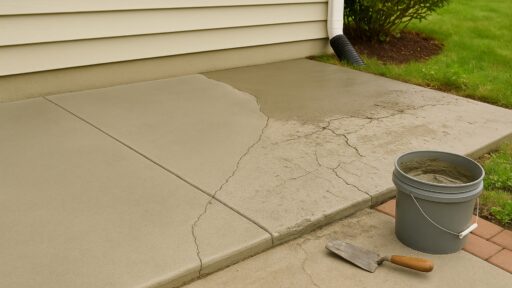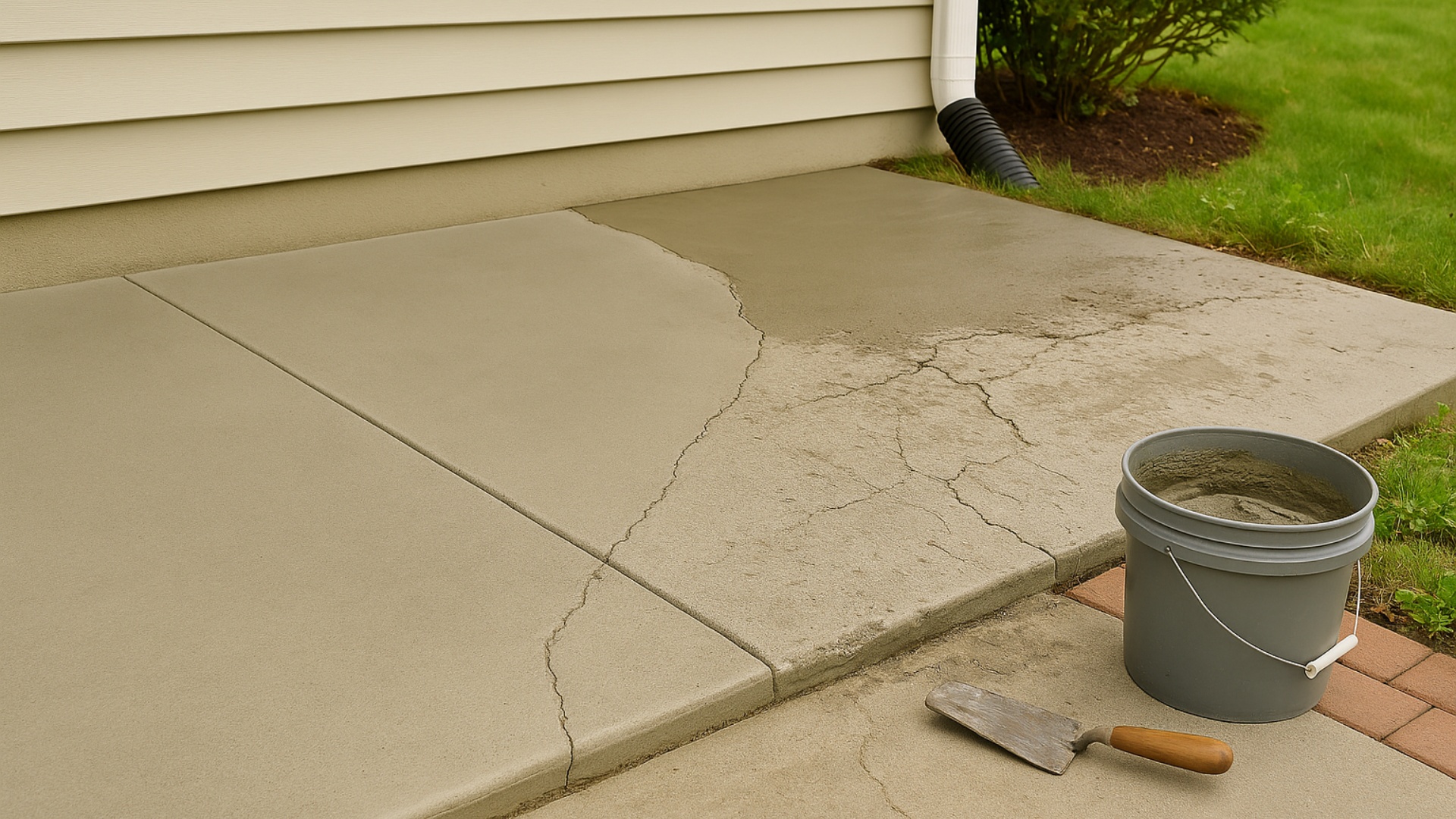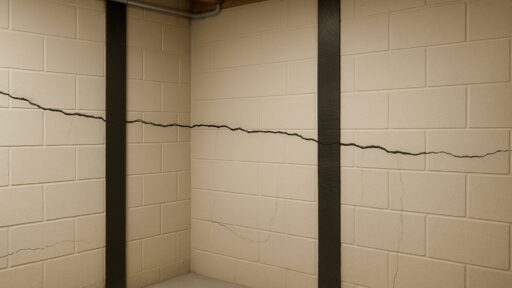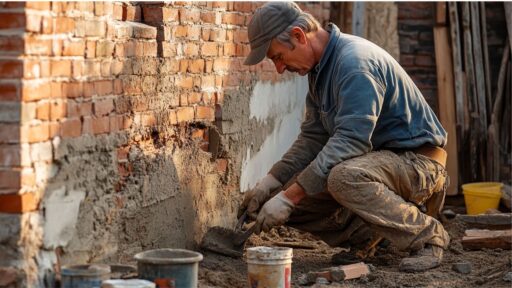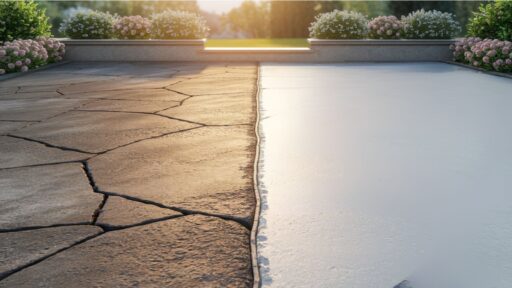Is your concrete porch showing signs of wear and tear?
Those cracks, uneven spots, and flaking surfaces aren’t just eyesores.
They can lead to bigger problems if ignored.
Concrete porch repair might seem intimidating, but with the proper knowledge, you can make smart decisions about fixing your porch.
Are you considering a DIY approach or hiring professionals?
Understanding the basics of concrete porch damage and repair options will save you time and money.
Our blog offers a clear explanation of everything you need to know about concrete porch repair in simple, easy-to-understand terms.
We cover identifying common problems to choosing the best fix for your situation.
Let’s get your porch looking great again and prevent future headaches!
Understanding Concrete Porch Damage
Concrete porches often develop several common problems.
Cracks appear when the ground settles underneath. They also form during freeze-thaw cycles.
Spalling happens when the top layer flakes off.
This usually occurs when water gets inside and freezes.
Your porch may also change color due to sun damage or stains.
In severe cases, structural problems can compromise the stability of your porch.
To assess the severity of damage, examine the crack width.
Hairline cracks are less severe than wide ones.
Check if water collects in damaged spots.
See if the concrete feels loose.
Small cracks and minor spalling are typically suitable for DIY projects.
Call a professional for large cracks wider than 1/4 inch.
Additionally, seek assistance for significant sinking, severe spalling, or any other structural issues with your porch foundation.
Common Causes of Concrete Porch Damage
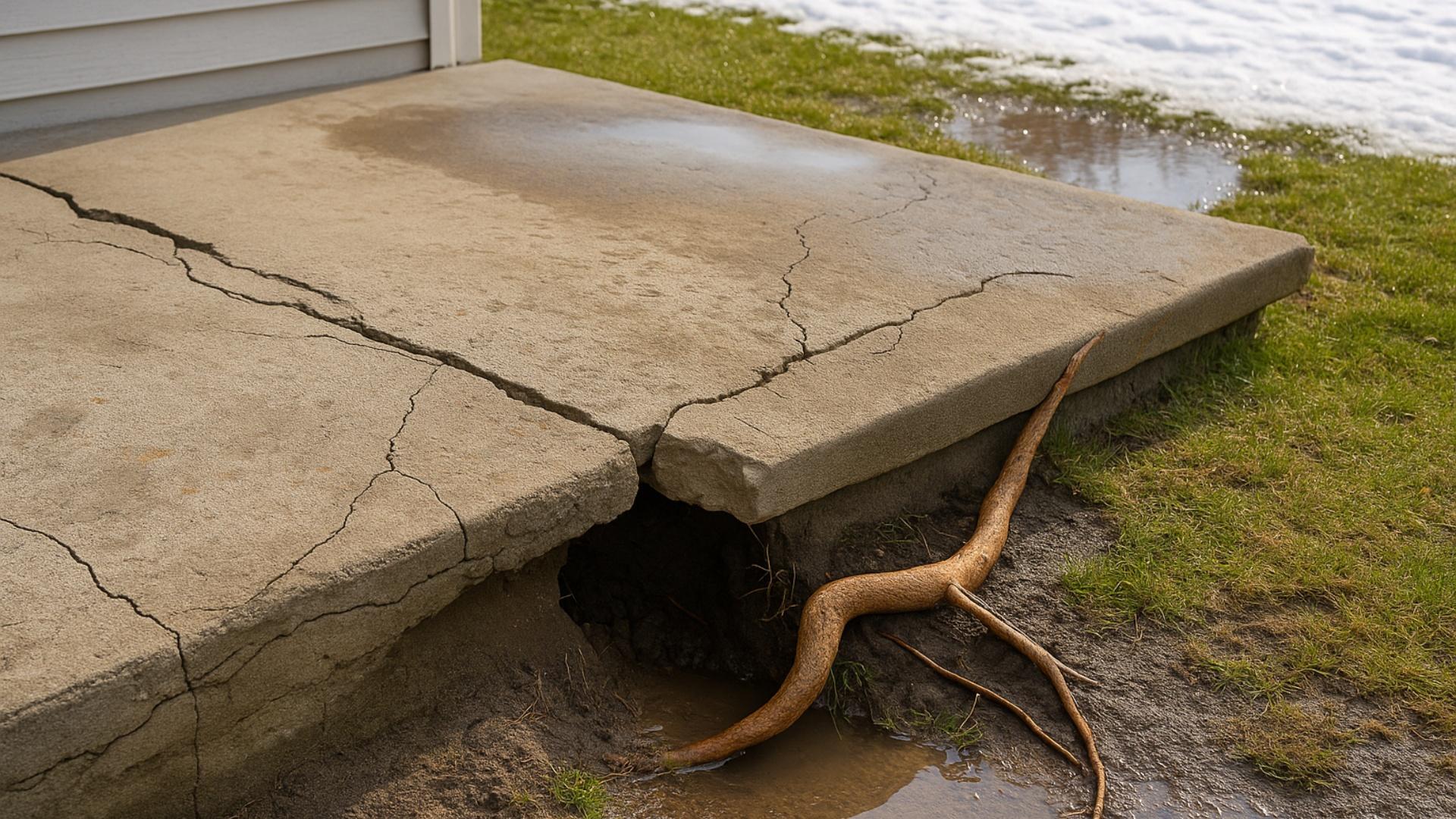
Understanding what damages your concrete porch helps you prevent future problems.
Most issues come from a few common sources that affect all concrete surfaces over time.
Let’s examine the causes of concrete porch damage.
1. Weather Exposure (Freeze-Thaw Cycles, Rain, Sun)
The weather is tough on concrete porches.
Water seeps into tiny cracks, freezes, and expands, thereby widening the cracks.
This freeze-thaw cycle repeats each winter. Rain washes away supporting soil.
Sun’s UV rays break down sealants and cause fading.
Temperature changes cause concrete to expand and contract, creating stress that can lead to cracks.
2. Soil Movement or Erosion Beneath the Porch
The ground under your porch can shift, settle, or wash away.
This causes parts of your porch to lose support, crack, or sink. Heavy rains erode the soil underneath.
Clay soils shrink when dry and swell when wet.
Tree roots growing nearby can also lift or crack concrete as they spread underground.
3. Poor Initial Construction or Materials
Many porch problems start during construction.
A weak concrete mix or insufficient reinforcement can cause early failure.
Skipping proper ground preparation or curing time leads to issues.
Thin concrete or missing control joints can lead to more cracks.
Using the wrong concrete type for your climate creates problems that appear later.
4. Age-Related Wear and Tear
Even well-built porches age. The surface wears down from foot traffic and everyday use.
Concrete loses strength over time. Small cracks form and grow wider.
Sealants break down and need replacing.
Metal reinforcement inside can rust and expand, pushing against the concrete and causing damage.
Signs Your Concrete Porch Needs Repair
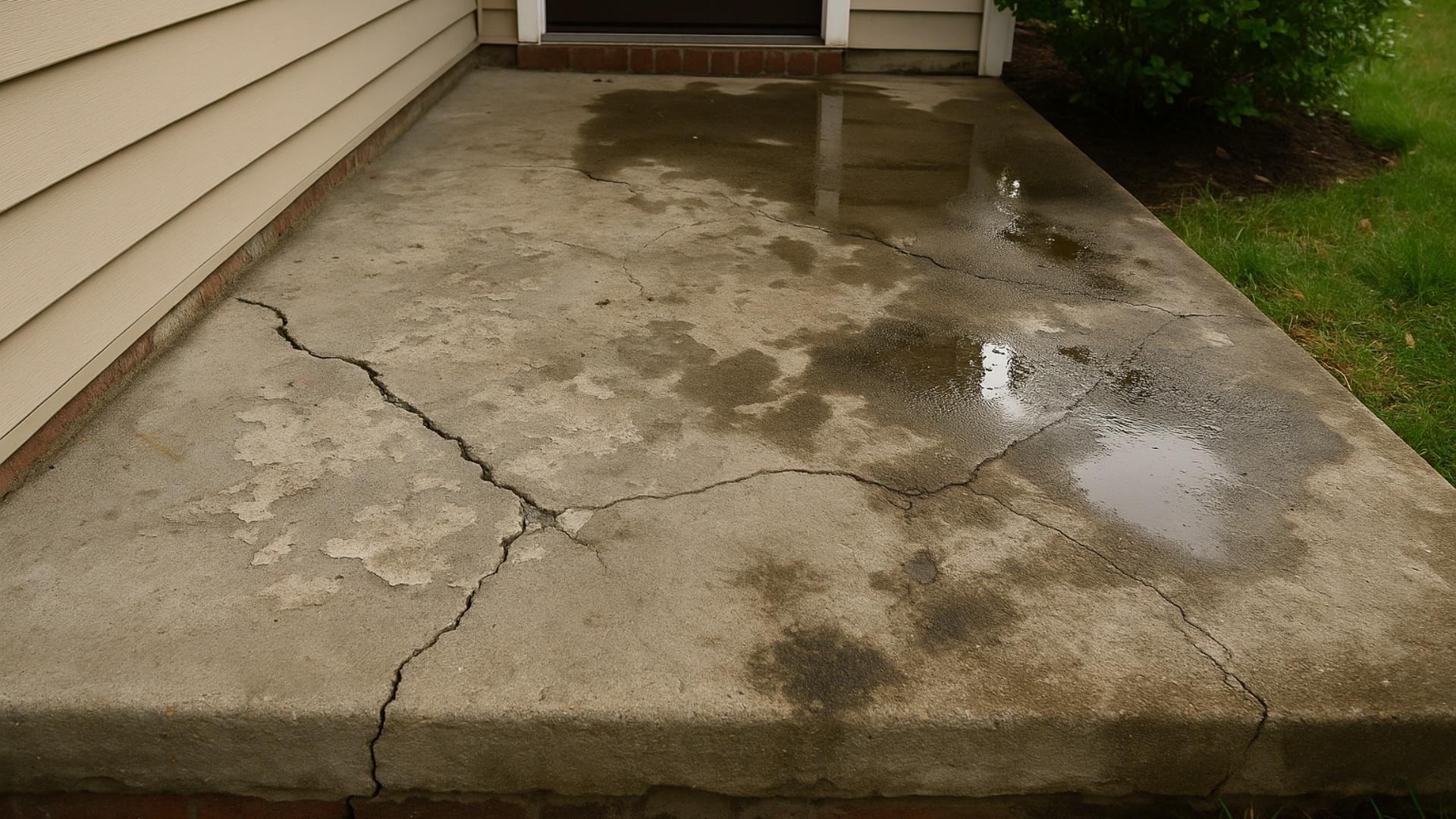
Your concrete porch will tell you when it needs help if you know what to look for.
Watch out for these common warning signs that indicate it’s time for repairs:
- Cracks in the surface, from thin hairline fractures to bigger, deeper breaks.
- Parts of your porch that are no longer level or have begun to sink.
- Concrete that’s flaking, chipping, or breaking apart at the surface.
- Water that doesn’t drain properly and forms puddles on your porch.
- Green, black, or unusual stains that might be mold, mildew, or other damage.
Don’t ignore these signs! The sooner you address these problems, the easier and cheaper they’ll be to fix.
Regular checks of your porch can help you catch issues before they become major headaches.
Top Techniques for Concrete Porch Repair
When your concrete porch needs fixing, several effective methods can help.
The right technique depends on the type and extent of damage.
Here are the top approaches professionals use to repair concrete porches.
1. Concrete Lifting (Polyurethane Foam Injection)
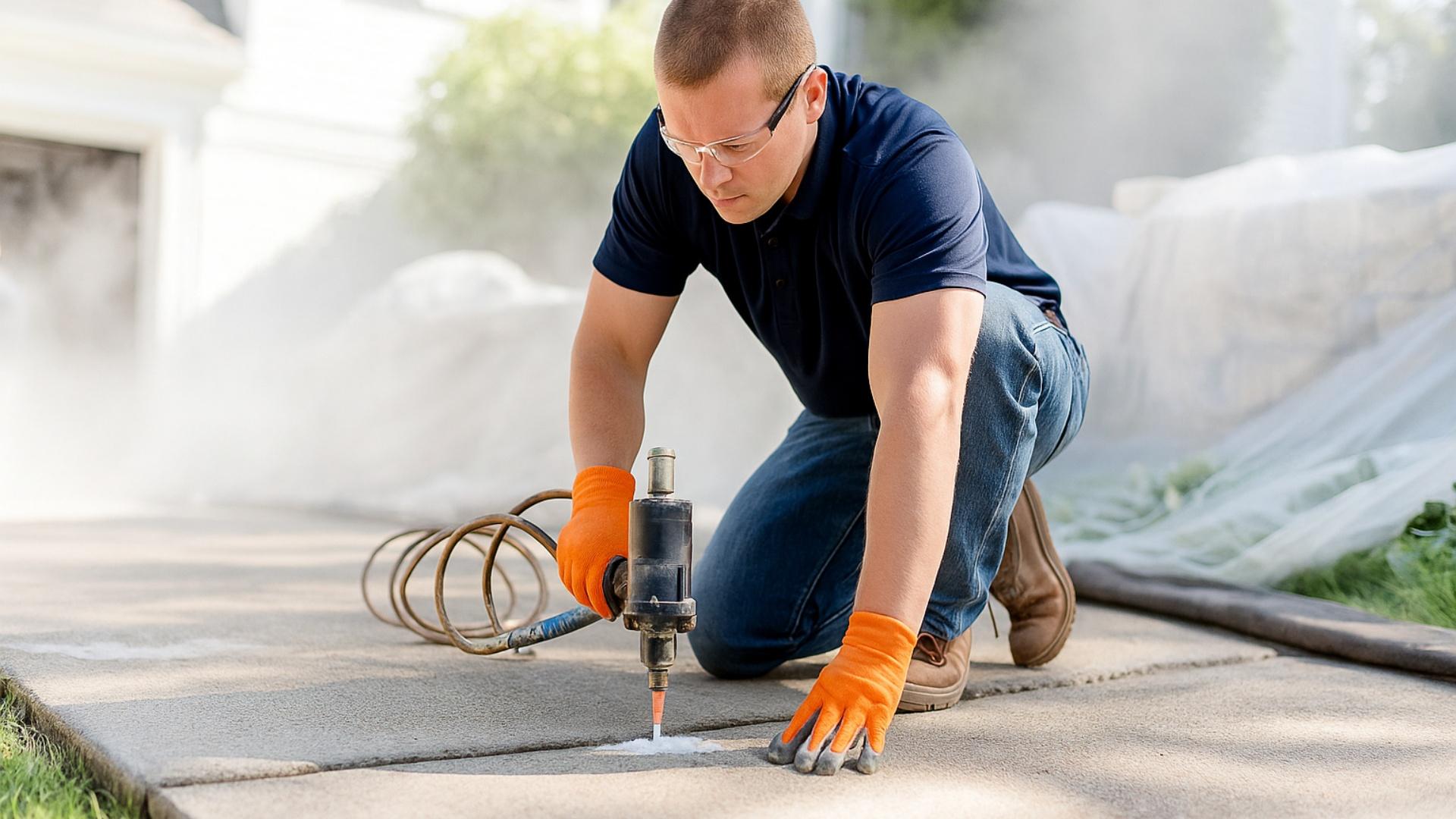
This modern technique repairs sunken concrete without requiring any demolition.
Small holes are drilled in your porch, and special expanding foam is pumped underneath.
The foam fills empty spaces and lifts the concrete back to its proper level.
The foam hardens quickly, typically within 15 minutes.
This method is cleaner and less disruptive than older mud-based lifting methods.
It also weighs less, putting less stress on the soil below.
2. Concrete Patching
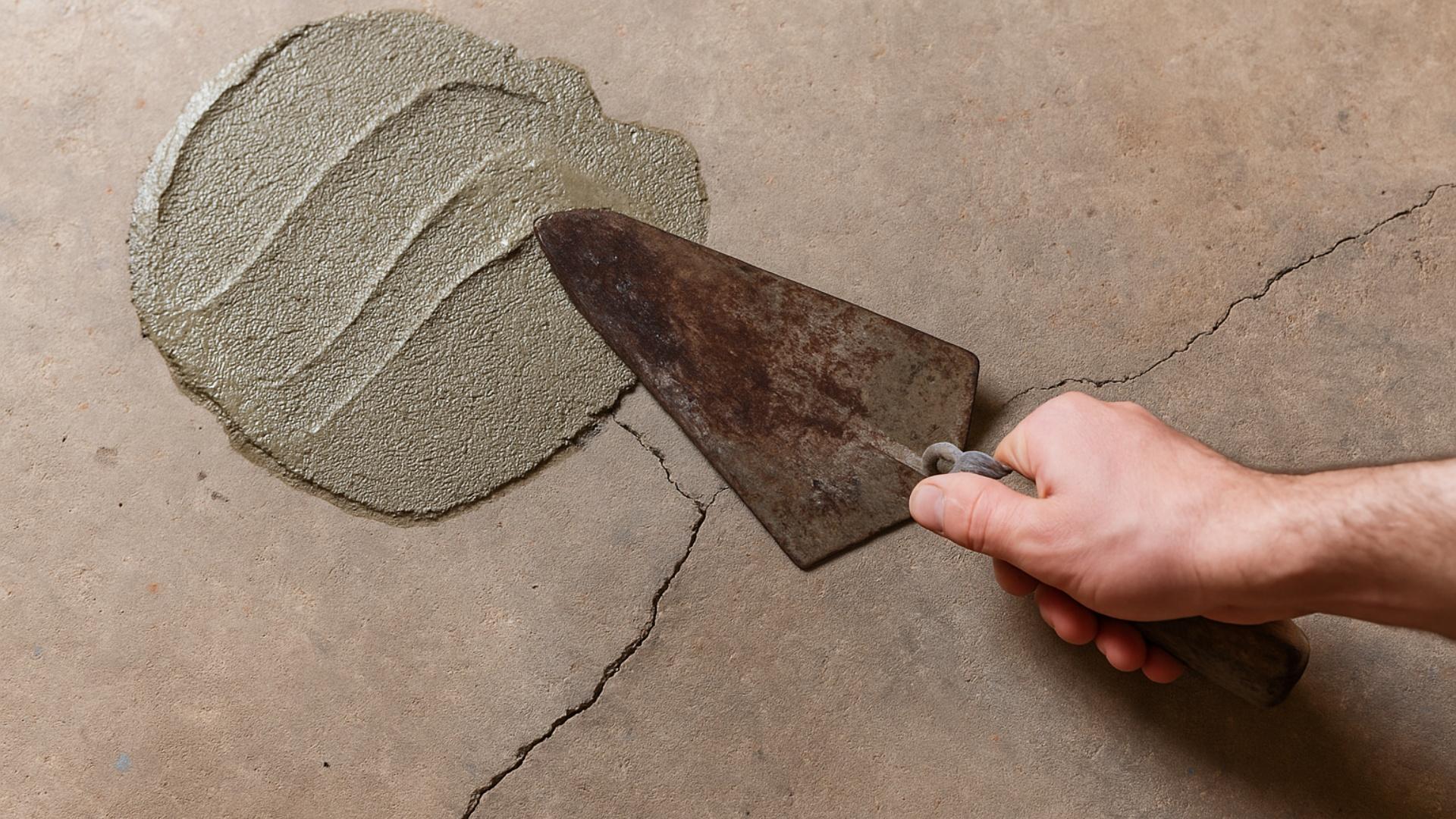
Patching fixes holes, cracks, and flaking areas in your concrete porch.
First, the damaged area is cleaned, and loose material is removed.
Then, a special concrete patch mix is applied to fill the space.
Different types of patches are effective for addressing various problems.
Epoxy patches are very strong and good for high-traffic areas.
Self-leveling compounds help even out uneven surfaces.
Proper patching not only enhances the appearance of your porch but also prevents damage from worsening.
3. Concrete Sealants
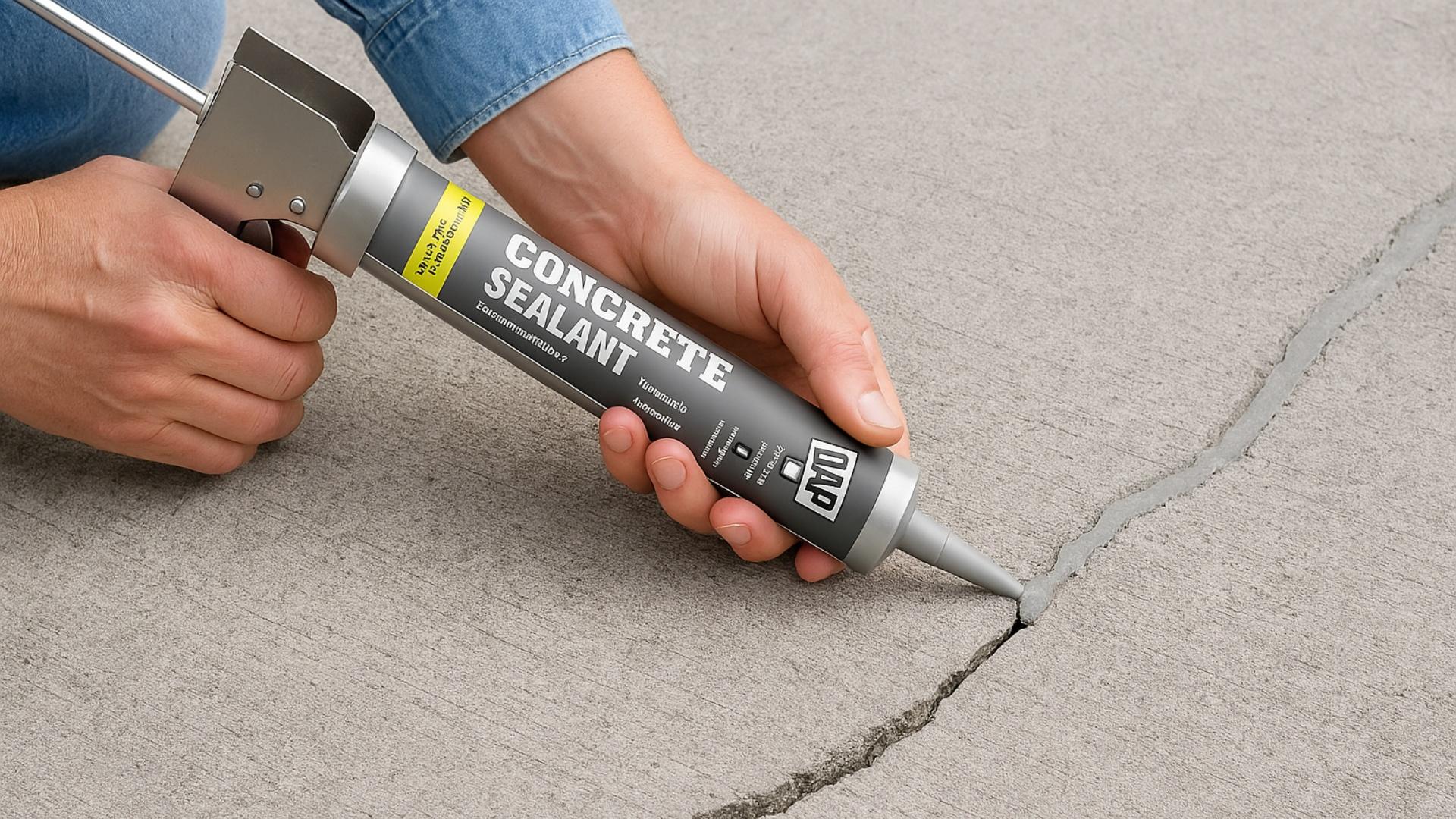
Sealants create an invisible shield over your concrete porch.
They block water, oil, and other substances from soaking in and causing damage.
Different types offer different benefits. Acrylic sealers are affordable and make colors look brighter.
Penetrating sealers penetrate deeply into the concrete for enhanced protection.
Silane-based sealers work well in freeze-thaw climates.
Most sealants need to be reapplied every few years to maintain their effectiveness.
They play an essential role in maintaining your porch.
4. Slab Replacement
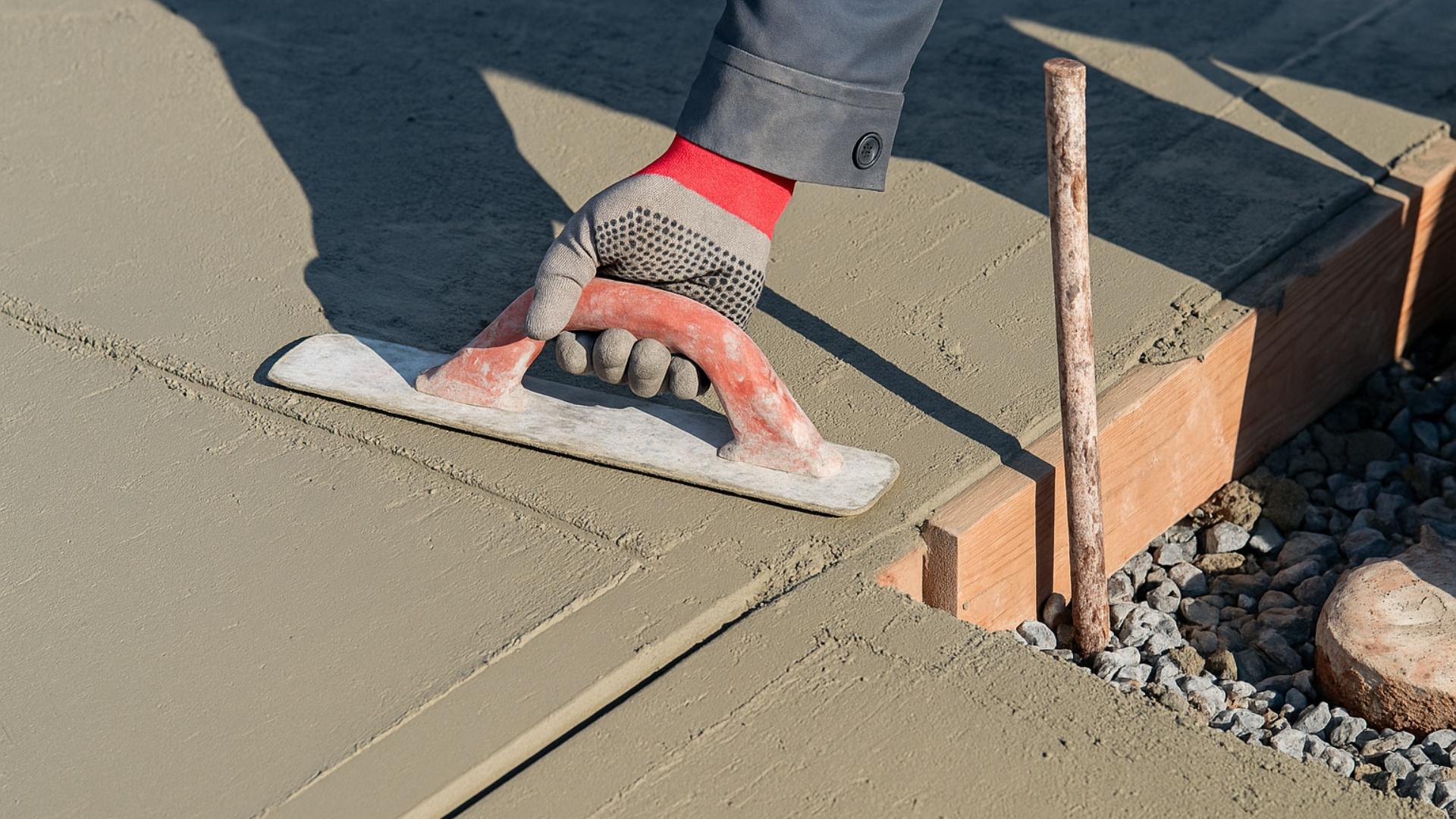
Sometimes damage is too severe for simple repairs.
Slab replacement involves breaking up and removing the old concrete porch and pouring a completely new one.
This provides you with a fresh start, utilizing properly prepared soil and reinforcement.
While it may be more expensive than other repairs, it offers a long-lasting solution for severely damaged porches.
The process typically takes several days, as the new concrete needs time to cure properly before it can be used.
5. Foundation Piers
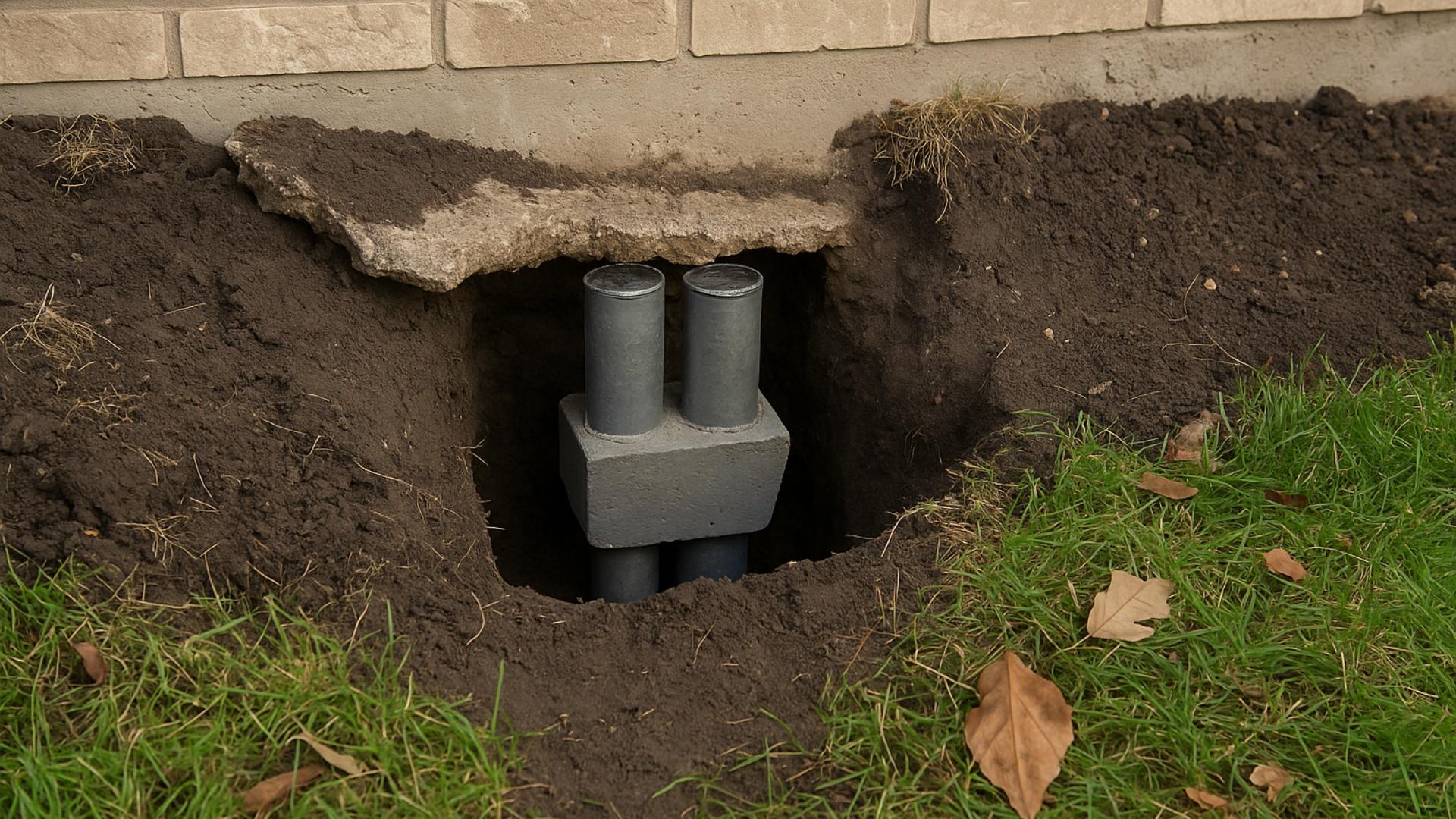
When your porch is sinking due to foundation problems, piers can provide the necessary support.
These metal supports are driven deep into stable soil beneath your porch.
Helical piers screw into the ground like giant corkscrews.
Push piers are forced down using the weight of your home.
Slab piers are specifically designed for concrete slabs.
Once installed, piers can be adjusted to lift your porch back to its original position and prevent future sinking.
Preventive Maintenance Tips
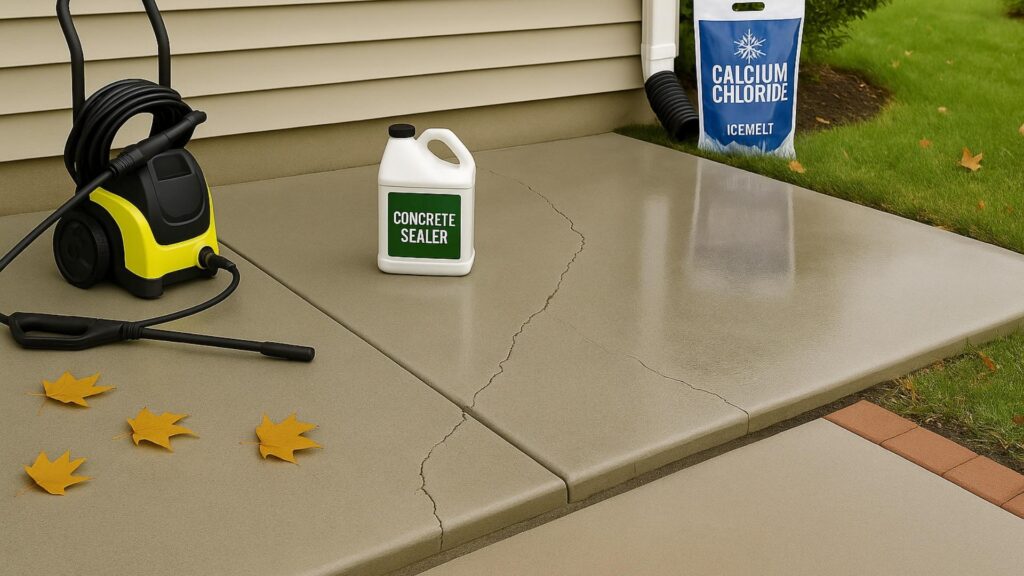
Taking care of your concrete porch regularly is much easier and cheaper than fixing major damage later.
Here are some simple ways to keep your concrete porch in good shape:
- Clean twice a year with a pressure washer or a stiff brush.
- Apply concrete sealer every 2-3 years to prevent water from penetrating.
- Fill small cracks immediately with concrete crack sealer.
- Ensure proper drainage away from the porch.
- Use sand or calcium chloride instead of rock salt in winter.
- Remove leaves and standing water promptly.
Remember that preventing damage is always better than repairing it.
These simple steps can save you thousands in repairs and extend the life of your porch for many years.
DIY VS. Professional Cost Considerations
Understanding the financial aspects of concrete porch repair helps you plan your project and make informed decisions.
Costs vary widely depending on the repair method, whether you do it yourself or hire professionals, and several other factors.
| REPAIR METHOD | DIY COST | PROFESSIONAL COST | INFLUENCING FACTORS | LONG-TERM VALUE |
|---|---|---|---|---|
| Crack Filling | $20-$50 | $200-$400 | Crack size, quantity | Moderate; prevents water damage |
| Concrete Patching | $50-$150 | $300-$800 | Area size, depth | Good; extends porch life 5-10 years |
| Sealant Application | $100-$200 | $300-$600 | Porch size, sealant type | Excellent; prevents future damage |
| Resurfacing | $200-$500 | $800-$2,500 | Size, prep work needed | Very good; lasts 10-15 years |
| Concrete Lifting | DIY is not applicable | $1,000-$3,000 | Porch size, severity | Excellent; fixes structural issues |
| Slab Replacement | DIY is not applicable | $2,500-$7,000 | Size, accessibility, and removal | Best, complete renewal for 20+ years |
Remember that investing in quality repairs often saves money in the long run.
DIY approaches are cheaper initially, but professional repairs last longer and address underlying issues that may not be visible to untrained eyes.
Get multiple quotes from contractors and ask about warranties before making your final decision.
The Bottom Line
Tackling concrete porch repair doesn’t have to be overwhelming.
By understanding the types of damage, knowing the repair options, and following good maintenance practices, you can keep your porch in excellent shape for years.
Remember that small repairs done promptly often prevent costly replacements later.
You might choose DIY methods for minor issues. Alternatively, you might consider consulting professionals for more complex issues.
Either way, the investment in concrete porch repair pays off.
You’ll get improved safety, better curb appeal, and increased home value.
Take action at the first sign of damage.
Your concrete porch will remain a beautiful and functional part of your home for many seasons to come.
Fixing that porch is just the beginning.
Browse our home improvement blogs to keep every part of your home in top shape!

